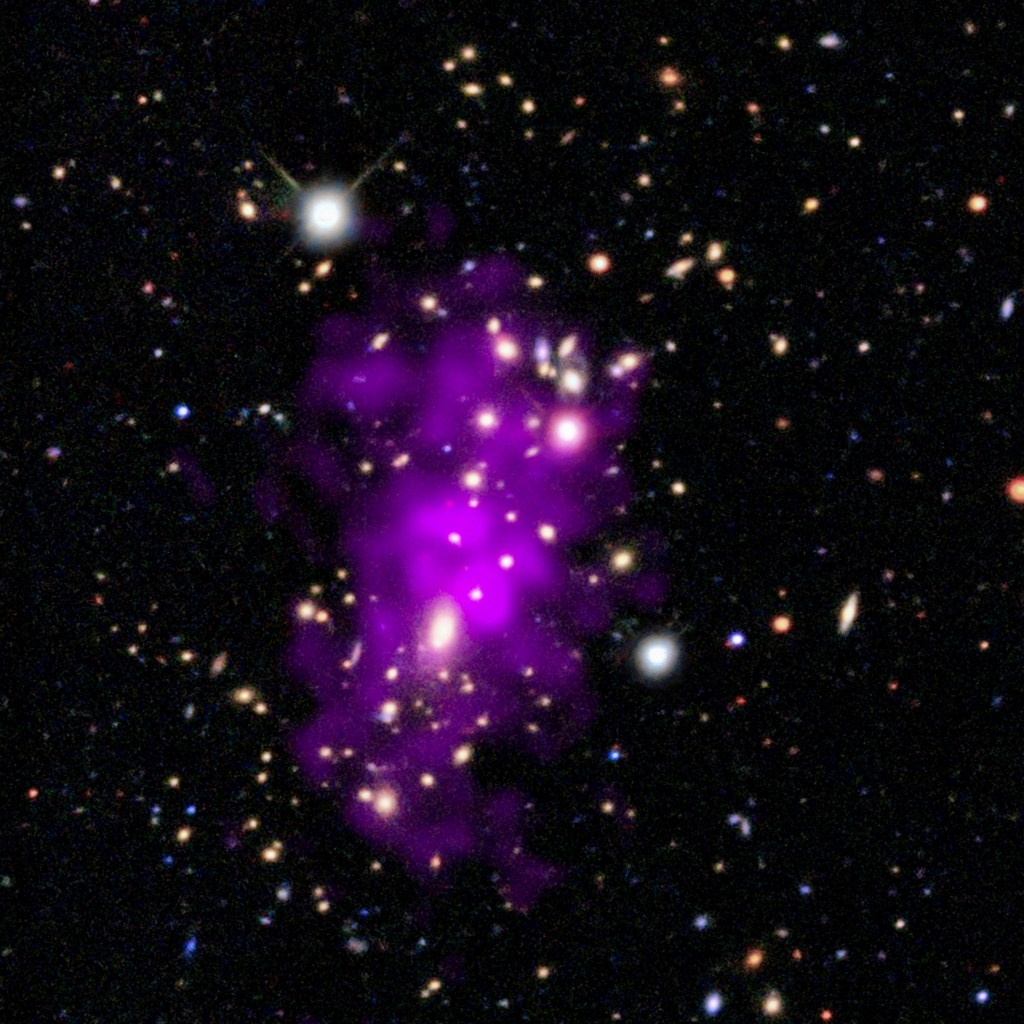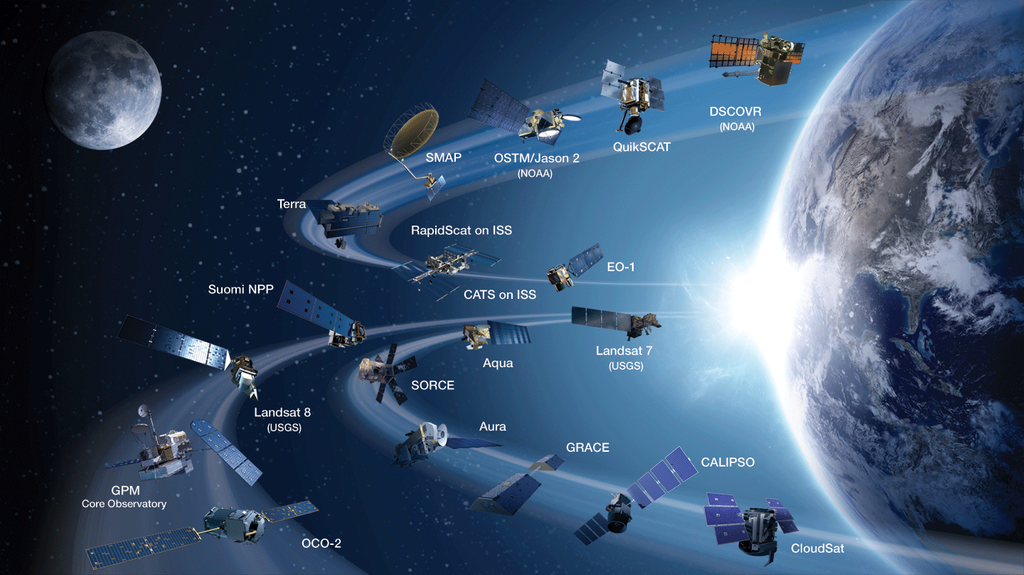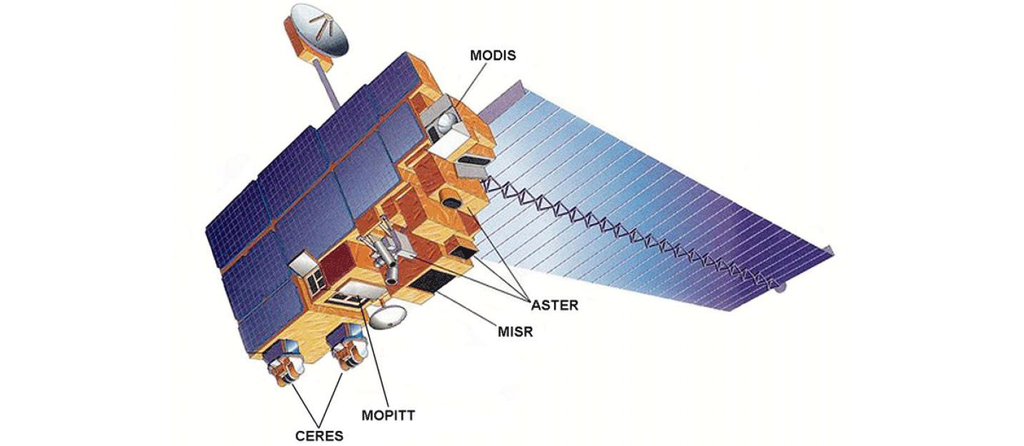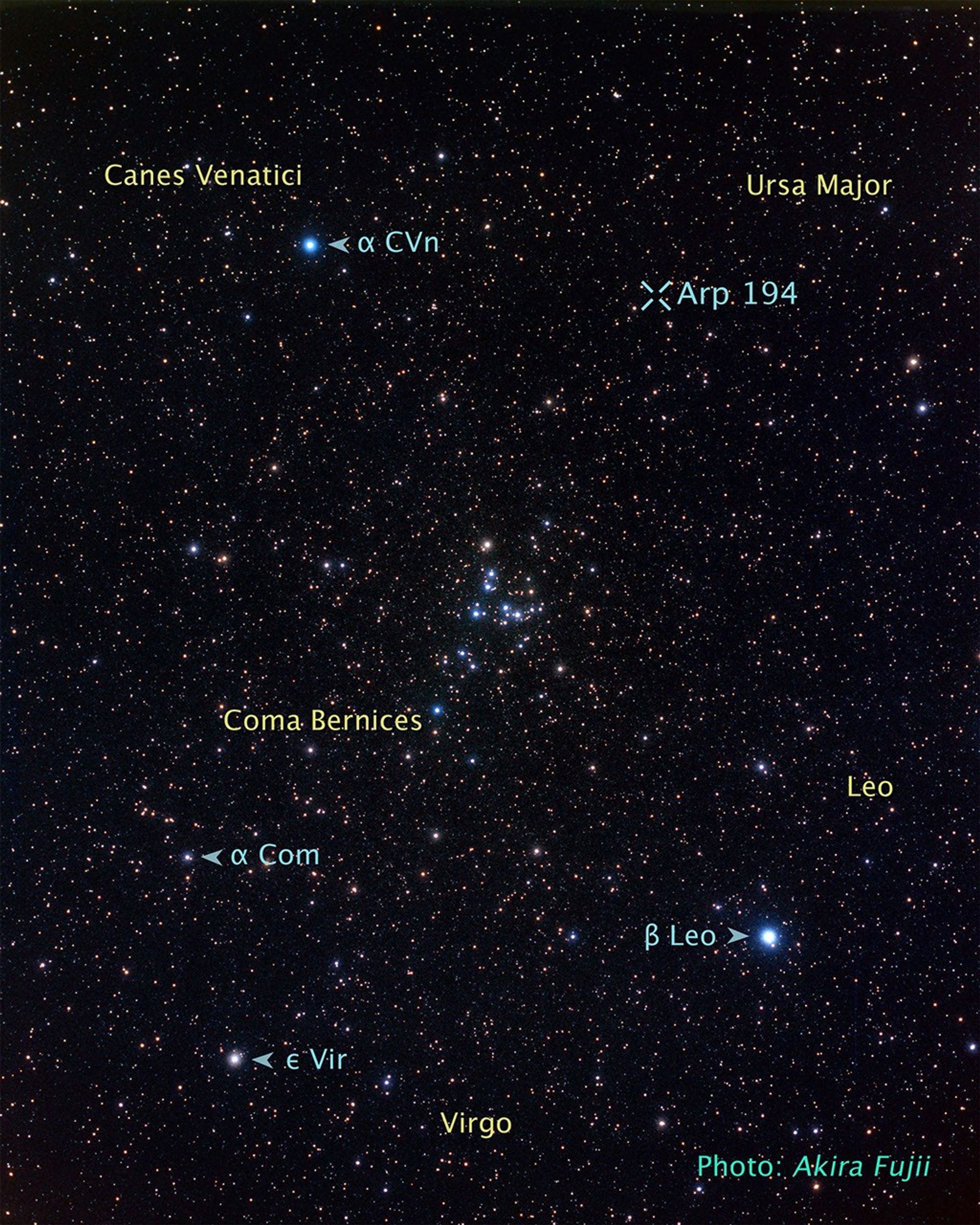1 min read
Interacting Galaxies Group Arp 194

To commemorate the Hubble Space Telescope's 19 years of historic, trailblazing science, the orbiting telescope has photographed a peculiar system of galaxies known as Arp 194. This interacting group contains several galaxies, along with a "cosmic fountain" of stars, gas, and dust that stretches over 100,000 light-years.
The northern (upper) component of Arp 194 appears as a haphazard collection of dusty spiral arms, bright blue star-forming regions, and at least two galaxy nuclei that appear to be connected and in the early stages of merging. A third, relatively normal, spiral galaxy appears off to the right. The southern (lower) component of the galaxy group contains a single large spiral galaxy with its own blue star-forming regions.
However, the most striking feature of this galaxy troupe is the impressive blue stream of material extending from the northern component. This "fountain" contains complexes of super star clusters, each one of which may contain dozens of individual young star clusters. The blue color is produced by the hot, massive stars which dominate the light in each cluster. Overall, the "fountain" contains many millions of stars.
These young star clusters probably formed as a result of the interactions between the galaxies in the northern component of Arp 194. The compression of gas involved in galaxy interactions can enhance the star-formation rate and give rise to brilliant bursts of star formation in merging systems.
Hubble's resolution shows clearly that the stream of material lies in front of the southern component of Arp 194, as evidenced by the dust that is silhouetted around the star-cluster complexes. It is therefore not entirely clear whether the southern component actually interacts with the northern pair.
The details of the interactions among the multiple galaxies that make up Arp 194 are complex. The shapes of all the galaxies involved appear to have been distorted, possibly by their gravitational interactions with one another.
Arp 194, located in the constellation Ursa Major, resides approximately 600 million light-years away from Earth. It contains some of the many interacting and merging galaxies known in our relatively nearby universe. These observations were taken in January of 2009 with the Wide Field Planetary Camera 2. Images taken through blue, green, and red filters were combined to form this picturesque image of galaxy interaction.
About the Object
- R.A. PositionR.A. PositionRight ascension – analogous to longitude – is one component of an object's position.11h 57m 55.29s
- Dec. PositionDec. PositionDeclination – analogous to latitude – is one component of an object's position.36° 23' 19.99"
- ConstellationConstellationOne of 88 recognized regions of the celestial sphere in which the object appears.Ursa Major
- DistanceDistanceThe physical distance from Earth to the astronomical object. Distances within our solar system are usually measured in Astronomical Units (AU). Distances between stars are usually measured in light-years. Interstellar distances can also be measured in parsecs.600 million light-years or 184 megaparsecs
- DimensionsDimensionsThe physical size of the object or the apparent angle it subtends on the sky.This image is 76 arcseconds (220,000 light-years or 68,000 parsecs) wide.
About the Data
- Data DescriptionData DescriptionProposal: A description of the observations, their scientific justification, and the links to the data available in the science archive.
Science Team: The astronomers who planned the observations and analyzed the data. "PI" refers to the Principal Investigator.The Hubble images were created from HST data from proposal 11956: K. Noll, Z. Levay, M. Mutchler, L. Frattare, M. Livio, W. Januszewski, C. Christian, F. Hamilton, and H. Bond (Hubble Heritage Team/STScI). - InstrumentInstrumentThe science instrument used to produce the data.HST>WFPC2
- Exposure DatesExposure DatesThe date(s) that the telescope made its observations and the total exposure time.January 14-19, 2009, Exposure Time: 4.7 hours
- FiltersFiltersThe camera filters that were used in the science observations.F450W (B), F606W (V), and F814W (I)
- Object NameObject NameA name or catalog number that astronomers use to identify an astronomical object.Arp 194
- Object DescriptionObject DescriptionThe type of astronomical object.Interacting galaxy system
- Release DateApril 21, 2009
- Science ReleaseHubble Celebrates Its 19th Anniversary with a “Fountain of Youth”
- Credit

The image is a composite of separate exposures made by the WFPC2 instrument on the Hubble Space Telescope. Three filters were used to sample broad wavelength ranges. The color results from assigning different hues (colors) to each monochromatic image. In this case, the assigned colors are: Blue: F450W (B) Green: F606W (V) Red: F814W (I)

Related Images & Videos

Visible-Light and X-Ray Composite Image of Galaxy Cluster 1E 0657-556
This composite image shows the galaxy cluster 1E 0657-556, also known as the "bullet cluster." This cluster was formed after the collision of two large clusters of galaxies, the most energetic event known in the universe since the Big Bang. Hot gas detected by Chandra in X-rays...
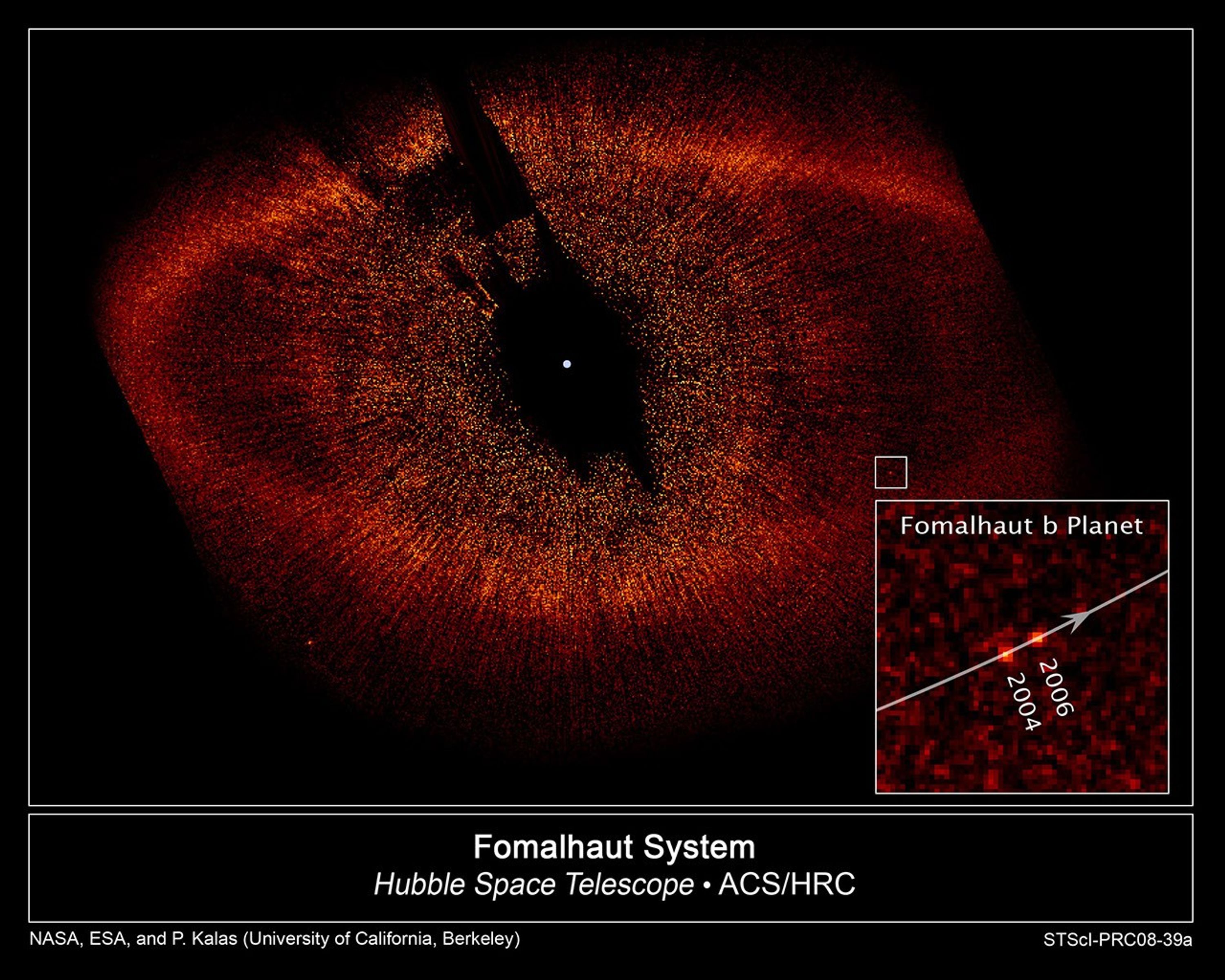
HST Image of Fomalhaut and Fomalhaut b
This image, taken with the Advanced Camera for Surveys aboard NASA's Hubble Space Telescope, shows the newly discovered planet, Fomalhaut b, orbiting its parent star, Fomalhaut. The small white box at lower right pinpoints the planet's location. Fomalhaut b has carved a path...

A Gallery of 'Tadpole Galaxies'
These postage-stamp-size images reveal 36 young galaxies caught in the act of merging with other galaxies. These galaxies appear as they existed many billions of years ago. Astronomers have dubbed them "tadpole galaxies" because of their distinct knot-and-tail shapes, which...
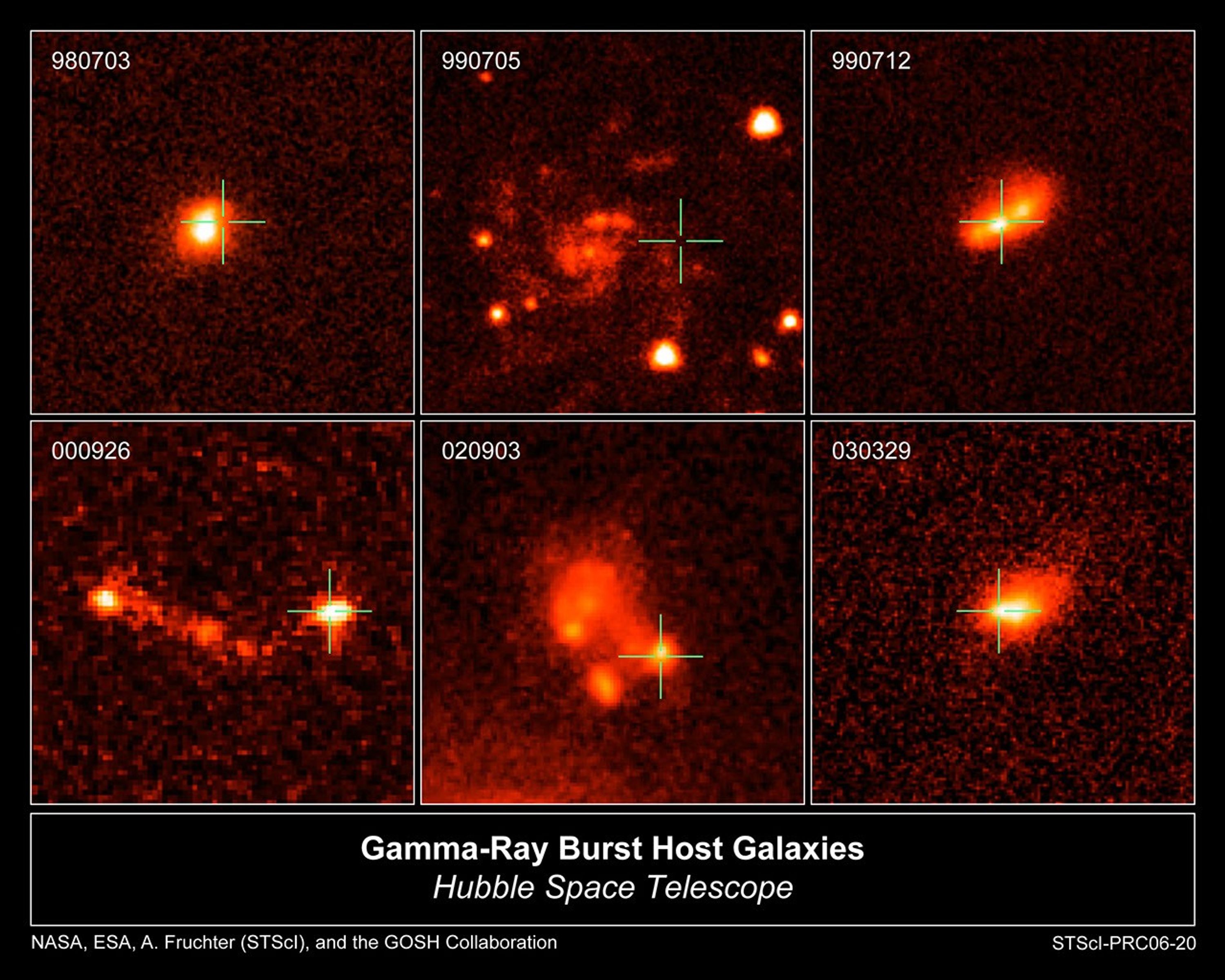
The Host Galaxies of Gamma-ray Bursts
This is a sampling of the host galaxies of long-duration gamma-ray bursts taken by NASA's Hubble Space Telescope. Gamma-ray bursts are powerful flashes of high-energy radiation that arise from some supernovae, the explosive deaths of extremely massive stars. Long-duration bursts...

Artist's Concept of Nearest Exoplanet to Our Solar System
This is an artist's concept of a Jupiter-mass planet orbiting the nearby star Epsilon Eridani. Located 10.5 light-years away, it is the closest known exoplanet to our solar system. The planet is in an elliptical orbit that carries it as close to the star as Earth is from the...

A String of 'Cosmic Pearls' Surrounds an Exploding Star
Two decades ago, astronomers spotted one of the brightest exploding stars in more than 400 years. Since that first sighting, the doomed star, called Supernova 1987A, has continued to fascinate astronomers with its spectacular light show. NASA's Hubble Space Telescope is one of...

Looking 'Underneath' Quasar HE0450-2958
This image shows the quasar HE0450-2958 after advanced image processing known as MCS-deconvolution. Thanks to this technique, it is possible to remove the brilliant glare from the quasar itself. The most interesting feature in the image is the nearly total absence of starlight...

Photo Illustration of Comet P/Shoemaker-Levy 9 and Planet Jupiter
This is a composite photo, assembled from separate images of Jupiter and Comet P/Shoemaker-Levy 9, as imaged by the Wide Field & Planetary Camera 2 (WFPC2), aboard. NASA's Hubble Space Telescope (HST). Jupiter was imaged on May 18, 1 994, when the giant planet was at a distance...

Pluto and Its Moons: Charon, Nix, and Hydra
A pair of small moons that NASA's Hubble Space Telescope discovered orbiting Pluto now have official names: Nix and Hydra. Photographed by Hubble in 2005, Nix and Hydra are roughly 5,000 times fainter than Pluto and are about two to three times farther from Pluto than its large...
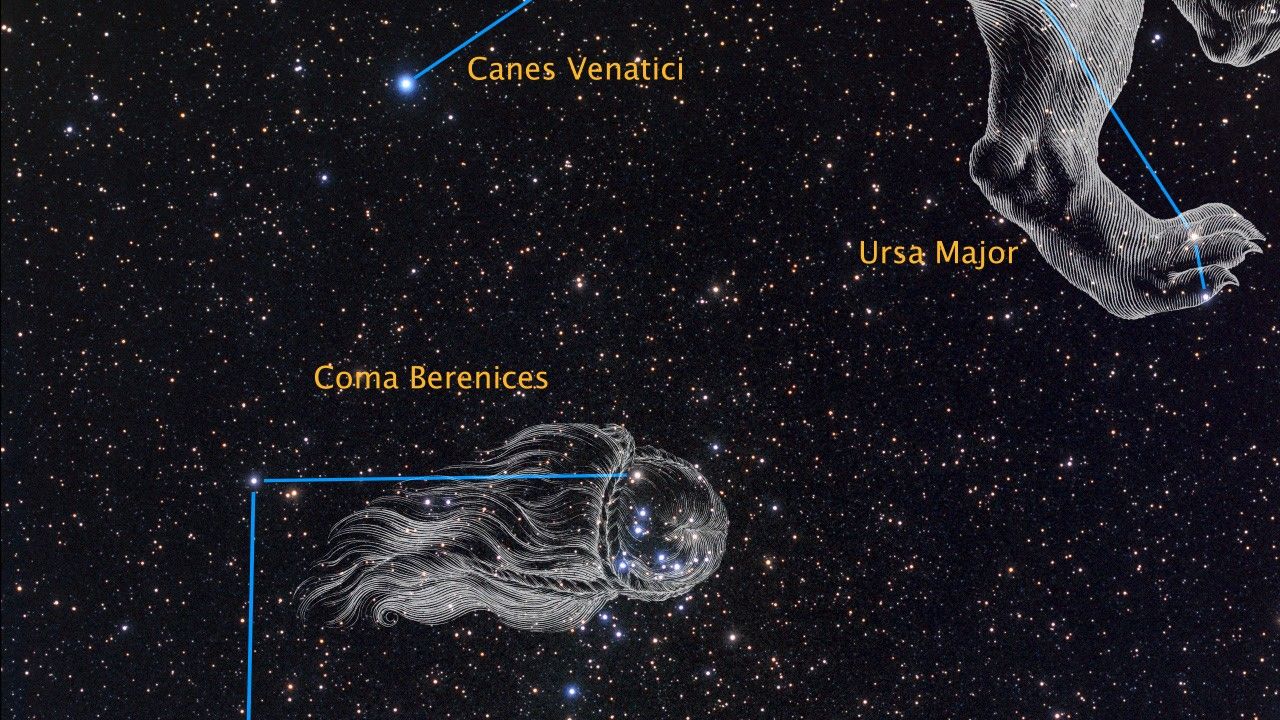
Pan and Zoom into Arp 194 (Narrated)
To commemorate its 19 years of historic and trailblazing science, the Hubble Space Telescope has taken an image of the Arp 194 system of galaxies. This interacting galaxy group contains several galaxies, along with a "cosmic fountain" of stars, gas, and dust that stretches over...
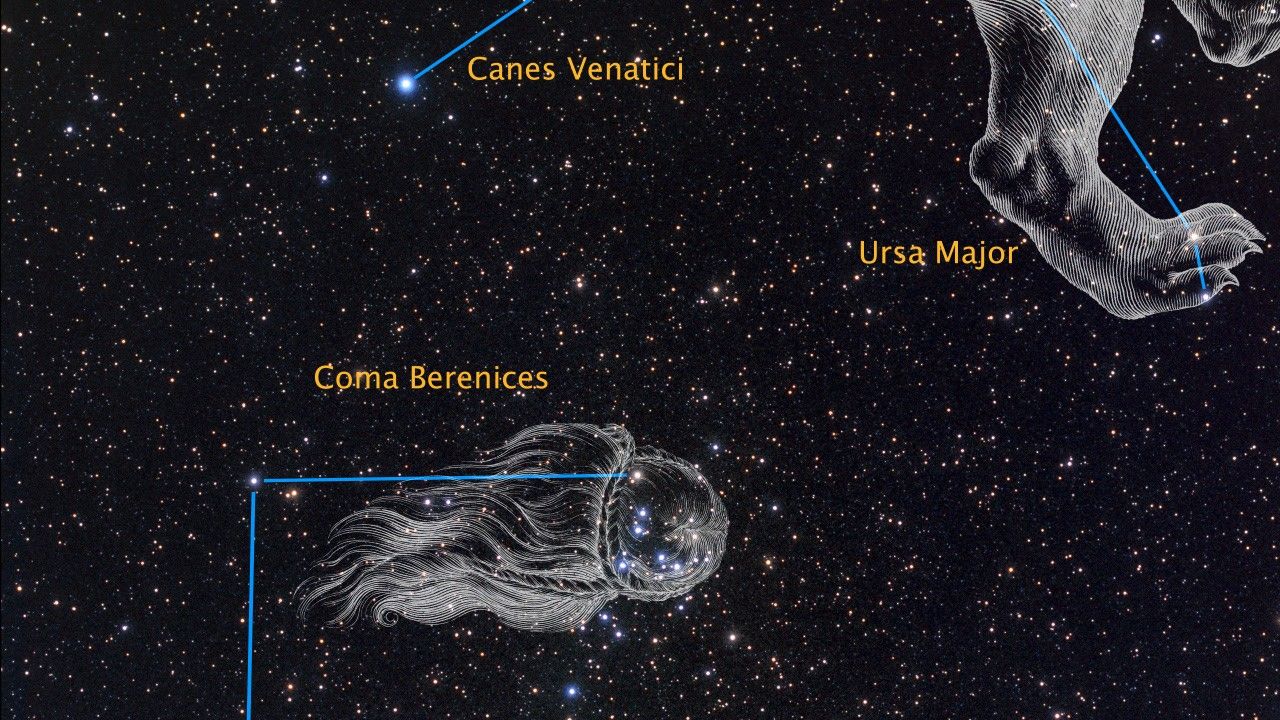
Pan and Zoom into Arp 194
To commemorate its 19 years of historic and trailblazing science, the Hubble Space Telescope has taken an image of the Arp 194 system of galaxies. This interacting galaxy group contains several galaxies, along with a "cosmic fountain" of stars, gas, and dust that stretches over...
Share
Details
Claire Andreoli
NASA’s Goddard Space Flight Center
Greenbelt, Maryland
claire.andreoli@nasa.gov




